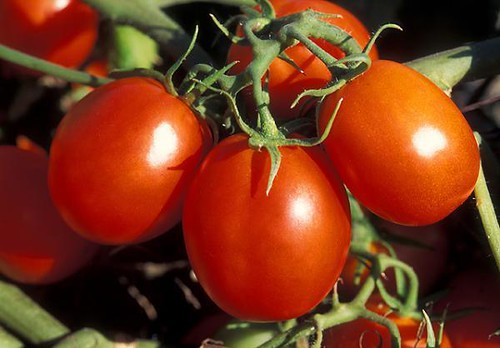This post is part of the Science Tuesday feature series on the USDA blog. Check back each week as we showcase stories and news from USDA’s rich science and research portfolio.
Fresh corn and homegrown tomatoes are as much a part of the traditional American scene as apple pie. Scientists with USDA’s Agricultural Research Service (ARS) have applied cutting-edge technology to learn more about these longtime favorites and, in the long run, make them even better.
As part of an international consortium of 300 researchers, ARS scientists recently sequenced the genome of the domesticated tomato. This achievement is expected to lower production costs and speed up efforts to improve the United States’ $2 billion tomato crop, making the plant better equipped to combat the pests, pathogens, drought and diseases that now plague growers. That’s good news for tomato fans, because since 2000, Americans have been consuming an average of 19 pounds of tomatoes per person every year.
Separately, scientists at Cold Spring Harbor Laboratory in Cold Spring Harbor, N.Y., sequenced the genome of tomato’s wild ancestor, Solanum pimpinelifolium. Together these sequences provide the most detailed look at the functional portions of the tomato genome, which includes 35,000 genes.

In 2009, ARS scientists announced that they and their colleagues had completed a four-year effort to sequence the genome of corn, an achievement expected to speed up development of new varieties of corn, the largest production crop worldwide. American growers produced an estimated 12 billion bushels of corn last year—more than a third of the world’s supply—with a value of $76 billion.
Now, the ARS scientists and their international collaborators have published the most comprehensive analysis to date of the corn genome. This week, the researchers published two separate reports that shed light on corn’s remarkable genetic diversity, reveal its evolution, and show how corn continues to diversify as it adapts to changing climates and habitats.
One of the reports examines the genetic structure and the relationships and sequential ordering of individual genes in more than 100 varieties of wild and domestic corn. The second report gives an unprecedented look at how corn evolved from a wild, scrubby plant into the corn we know today, providing food for billions of people and livestock and critical feedstock for production of biofuels.
The advancements of genomic research at USDA have the potential to reveal a large amount of information to increase yields and resist diseases. These successes on the farm will transfer to your table by providing more nutritious crops for your family to enjoy.
